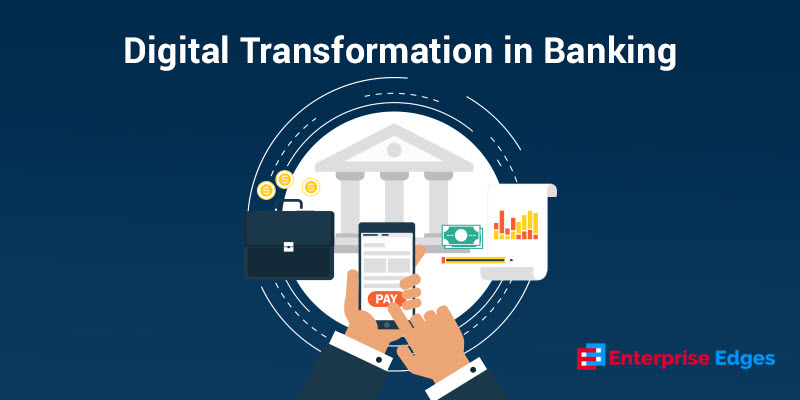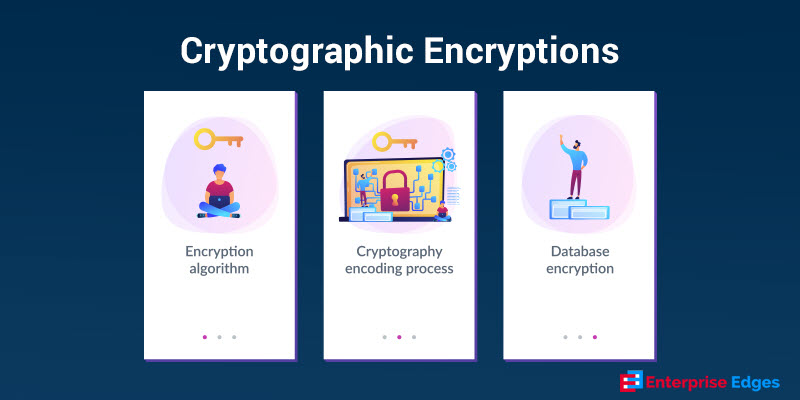The financial marketing sector and the banking services of the digital age are running on the path of secured modern and unique regulations. The world of open banking is now disrupted for a certain period of time with the entry of incumbent banks. Now, the question is, in the presence of such crucial deflection, how would the digital transformation in banking take place? As no customs change overnight, and Rome could not be built in a day; in the same way, the typical banking system is going to adapt digital ways to afford customers, consumers, and clients with convenience. The challenge of the contemporary banking system is to stay relatable to customers’ current requirements to assist them financially in the future.

Post-2015, the path to get digital transformation had become stringent because of the presence of risk mitigation tools. With the advent of VC funding, Fintech disruptions, mobile wallets, chatbots, personalized banking, and conversational banking, traditional banks faced a great amount of backlash. But, now, as the banking and finance sector is progressing towards the beginning of 2020, banks and financial units are working towards attaining digital transformation in banking. To catalyze the banks’ future business models, to increase the level of autonomy, and engage each member to contribute diligently to make an effective ecosystem model, digital transformation is highly essential.
Learn the Different Facts of Digital Transformation in Banking in brief
What does digital transformation in banking mean? According to financial and bank reports, the constant aim is to achieve digital improvisation. In a real sense, it means a paradigm shift of involving processes that would curtail offline and manual processes to bring online and digital services. For the first time in the banking sector, when banking officials heard digital wallets and other things, they were in serious shock. A series of distinct and separate digital initiatives were undertaken. But, none could pass the bridge of success. Digital transformation in banking now should count on offering customer experience, platform apps, integrated digital systems, Artificial Intelligence (AI) infrastructure, and the most important factor, awakening and promulgating the idea of blockchain technologies.
There are four main concepts of making a digital transformation in the banking unit. To know what they are, read below.
1. Reinventing the mode of transactions in banking to facilitate a consumer’s experience
Unlike many advanced banking systems which Amazon, PayPal, involve, the traditional banks lack. The consumer, on the other hand, is urged to have a bank that impacts frictionless banking processes. Here, at this point in time, bankers need to converge technical, digital transformation in banking with scientifically proven methods to digitize the consumer journey, which includes automated digital lending advice and digital onboarding sequences.
2. Leveraging Data Analytics into business opportunities
This is the second pillar upon which, if the banking sector works, it can achieve digital transformation easily. Using the power of data principles, bankers can understand the psyche of consumers. If advanced analytics are brought into play for digital transformation in banking, it becomes easy for the financial institutions to keep a record of loan defaulters at one click. To add to it, data analytics also help in fostering data mining techniques to render tailored solutions. To improve pricing, data mining is important. If banking units adopt this method, this can help them to obtain their target clients.
3. Reconstructing the on-going business bank model can bring in new perks
The modern-day consumer wants everything to be told in a conversational tone. So, the third pillar to any digital transformation in banking needs to have a well defined digital experience rendering the banking business model. There are three ways to do this. Firstly, choose a business model that finds focus on maintaining bite-sized quotients. Secondly, introducing a new business unit that holds professionals from different degrees to contour the unit as a digital inclined project is the best thing to transform in banking sectors. Thirdly, building a digital native body can help you earn new customers across the globe.
4. Framing a digital credit union becomes a priority
It is really crucial to bring the entire banking sector on digital transformation to help customers with the same. In the first place, fusing traditional environments with digital affluence is challenging, but it’s not impossible. Even a toddler learns to walk for the first time with trembling feet. Experts say, when you integrate digital applications with legal infrastructure, 80% of digital initiatives become successful.
Gather the rightful information about digital transformation for FinTech Companies
Like the banking industry, financial units understand the aesthetic value of digital transformation in banking and digital transformation in financial services. It is often concluded that 62% of digital transformation is an initiative taken upon the shoulders of management, and the rest is the garnishing part leftover with the financial executives. Now, what do you mean by fintech companies? According to validated research papers, Financial Technology or Fintech is a combination of improved techniques and automated delivery of financial services. The use of crypto-currencies and e-currency exchanges began with these global banking and fintech industries. The information on tools that fintech companies use are mentioned here,
1) Blockchain
The first tool for digital transformation in banking or financing preferred for making a challenging space is Blockchain. This tool synthesizes financial services in the form of a new currency known as cryptocurrency. This is a breakthrough point in digital banking trends where blocks of data can be put out through online medium. This, in return, reduced money laundering cases, catalyzed trading measures, reduced frauds to half, and solved unnecessary challenges.
2) Cloud Computation

Cloud computation or banking on the cloud services is the second best tool of digital transformation that helps in managing accounts and core systems in a well-versed manner. Manifesting this tool, it becomes easy for the financial companies or units to keep a record of credit scores, cloud structures, and billing amounts in a low-risk method.
3) Robotic Automation
Who knew robotics could bring challenges down in a short span of time? With the introduction of robotic automation in banking, the banking sector now does not have to make a manual deposit of bills, journal entries, receivable operations, and allocations.
Other than these banking technology trends tools, two more processes that are in ready use in the financial institutions are data visualization or data storage and advanced analytics to channelize the load of consumers’ data.
Latest trends of digital information in the financial industry
There are different latest developments in the financial industry and the digital transformation in banking that the fintech companies took well over a short span of time. The recent developments of the decade are herein below mentioned.
1. Congregation of banking and incumbent payment
The first evolution of the digital transformation financial industry took place to accept incumbent methods that will stay for a positive change in the financial industry through the digital transformation in banking. In the process, newer methods of digital policies are taking a plunge to win and retain customers. Smart contracts are helping to build a never-ending relationship between financial vendors and suppliers.
2. Introduction of seamless integration
To give a pause of time for chargeback and fraud; seamless integrations, which involve EMV techniques for merchants, are an easy method to experience digital transformation in banking.
3. Back-end policies
With the help of cloud software, the financial institutions are easily helping consumers submit an online application. This is totally possible for the introduction of different big data tools, automated wealth managers, and mobile apps.
Latest trends of digital transformation in the banking industry
The end of 2019 and the beginning of 2020 is a period for the latest developments to showcase as digital transformation in banking. Different departments have come together to make this impossible cause a successful project. The different trends in the banking industry that took place through digital transformation are:-
1) Quantum Computation
The digital transformation in the banking industry is developing ideas to involve quantum computation methods to bring in new data processing models. This opening of the new stream will help the banking industry to perform complicated calculations in a few seconds. Like the banking industry, the financial industries also use this tool to find solutions. Quantum computing is also seen to have an impact on the cybersecurity system.
2) Involvement of the penetration test
A pen test or penetration test is a newer version of artificial intelligence as known for digital transformation in banking to:-
- Curb external attacks;
- Prevent vulnerabilities to damage the system;
- Foster more security using machine learning algorithms.
3) Involvement of native cryptographic encryptions

Data transfer is a prime act of banks to perform during working hours. Homomorphic encryption or securitization or cryptographic encryption are the latest methods of digital transformation in banking to handle the bulk of data at any hour of the day. This facility will ultimately reduce the breach or misuse of data.
Apart from these trends in the banking industry, some other reformations that took place are virtual reality and augmented reality. The upcoming reforms can be seen in retail banking digital transformation. It is now known that banking and digital transformation are two sides of the same coin. Making one powerful will lead another to earn profits.
Conclusion:
The digital transformation in banking is going to demarcate a renaissance in the next few years. The future of banking will lead the financial industries to render services according to customer needs. The entire digital transformation banking sector process helps both the wings to improve efficiency and flexibility at large.